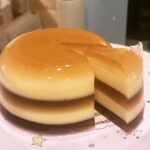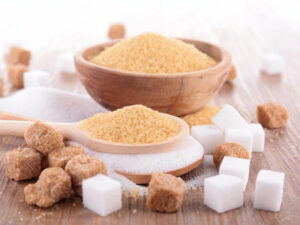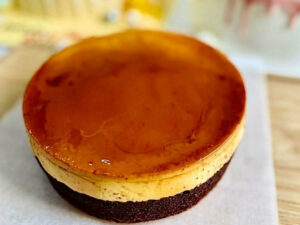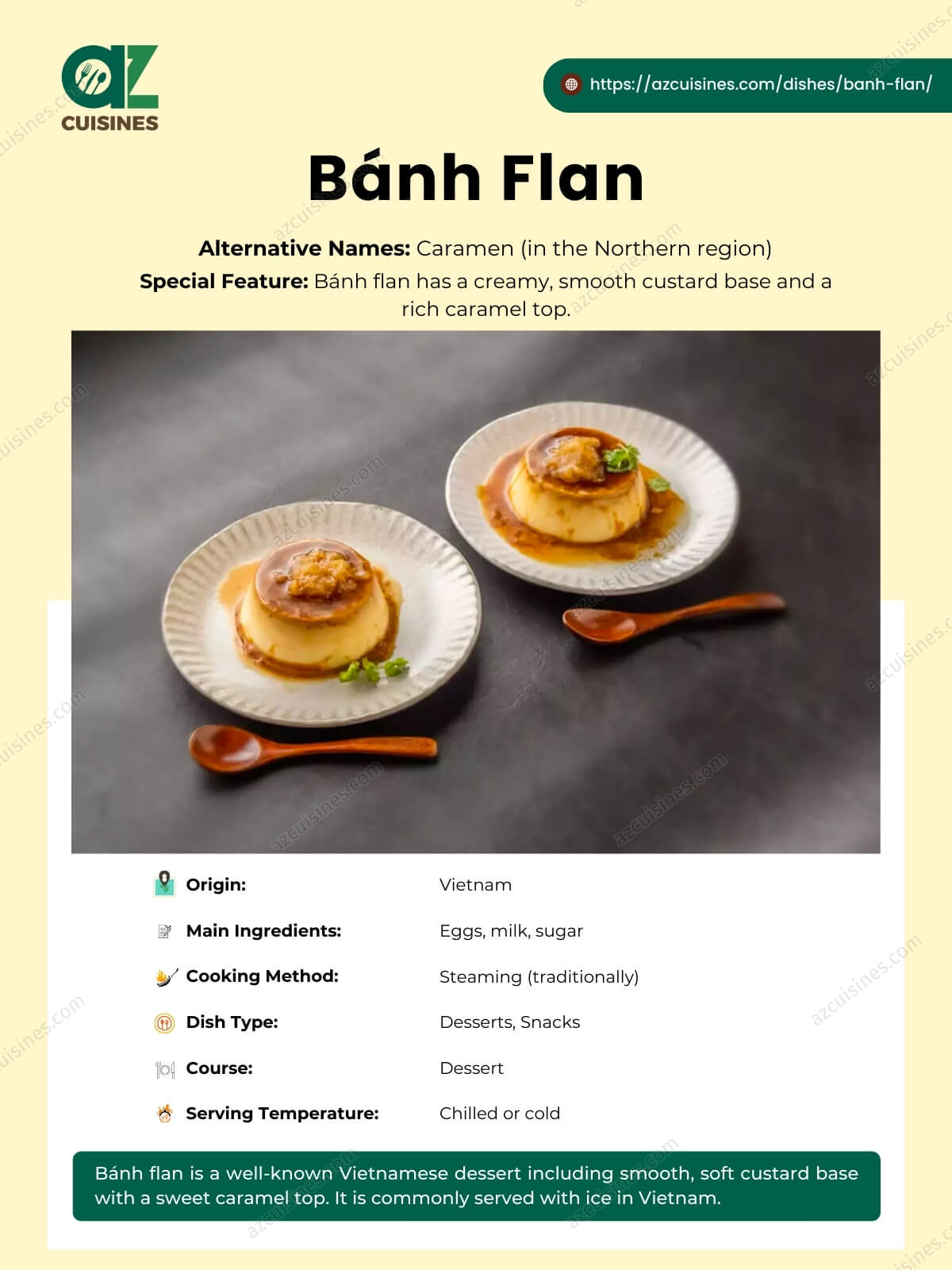#85 in Vietnam
Bánh Flan: Basic Information
Pronunciation
Alternative Name(s)
Dish Type
Course
Mealtime
Popular Bánh Flan Variations

Bánh Flan Trà Xanh

Bánh Flan Phô Mai

Rau Câu Bánh Flan

Bánh Flan Gato
Bánh Flan: Ingredients and Preparation
Main Ingredients
Main Cooking Method
Preparation Process
Bánh Flan: A Deep Dive
Cultural Significance
Taste
Texture
Aroma
Color
Serving Style
Serving Temperature
Accompaniment
Occasions
Seasons
Special Diets
Calories
Popularity
Popular Similar Dishes
- Crème Brûlée
Popular Dining Area
Bánh flan is a favorite dessert made from a steamed mixture of eggs, milk, and caramelized sugar. It is popular across Vietnam, especially as a street food in urban regions.
Regarding its history, bánh flan is a fusion treat that was introduced during the French colonial period in Vietnam.
It eventually evolved through the addition of local ingredients and flavors. It is also known as a Vietnamese-style creme caramel. Plus, in the Northern part of Vietnam, bánh flan is known as caramen.
In the reading, you’ll have a closer look at Vietnamese flan cake’s ingredients and how to prepare it in the traditional way (steaming on the stove) or baking it in the oven. Furthermore, I’ll show you some beloved varieties of bánh flan in this Southeast Asian country.
Nonetheless, consumers should be mindful of the specific benefits and drawbacks to enjoy them accordingly, address some common questions regarding bánh flan, and find out other similar culinary delights.
Key Points
Bánh Flan Images
What Are Ingredients To Prepare Bánh Flan?
To prepare bánh flan, you typically need the following ingredients:

Eggs
Use whole eggs and additional egg yolks for a richer custard base.

Milk
In Vietnam, locals can make it with either condensed milk or fresh milk (or both). All increase the creaminess of the cake.

Sugar
For making caramel. It can be white or brown sugar.

Vanilla Extract
To reduce the original flavor of eggs and give bánh flan a more delicate aroma.
Please note that the exact ratio of milk to eggs in bánh flan can vary as it also depends on what types of milk are used. However, they are important in determining the cake’s texture and smoothness.
Another factor for a perfect flan is cooking it. Read on to comprehend its making process.
How To Make Bánh Flan?
Here are simplified steps to prepare bánh flan at home.
Step 1: Preparing the Caramel
In a saucepan, mix sugar and water. Heat until the sugar dissolves and turns into a golden-brown caramel. Quickly pour the caramel into ramekins or a flan mold, tilting to coat the bottom evenly.
Step 2: Making the Custard Mix
Whisk eggs in a bowl. Add sweetened condensed milk or fresh milk (or both, depending on personal preference) and a splash of vanilla extract. Mix well. Strain the mixture with a filter to increase the smoothness.
Step 3: Pouring the Mixture
Pour the custard mix into the caramel-coated ramekins or mold.
Step 4: Steaming the Flan
Steam them on the stove. To check the doneness. Use a toothpick to pierce the cake; if no batter sticks to it, bánh flan is ready.
Step 5: Cooling
Let them cool to room temperature, then transfer them to the fridge until chilled.
Step 6: Serving
Vietnamese people normally enjoy bánh flan with brewed black coffee since the bitterness of coffee can complement the sweetness and creaminess of this steamed cake. Additionally, locals also often use milk coffee or mix black coffee with coconut milk to reduce the bitterness.
However, bánh flan often ends up with a pitted surface when steam condenses on the lid and drips down during the steaming process. Therefore, others choose another way to cook it, which is by oven.
How To Bake Bánh Flan in An Oven?
Making bánh flan in an oven is similar to steaming it on the stove, except for the part of preparing it for baking. You will need to:
- Step 1: Preheating the oven to 325-350°F.
- Step 2: Placing the filled ramekins in a deep baking pan and creating a water bath by filling the pan with hot water to the midway point of the ramekins’ height.
- Step 3: Baking the flan for around 45 minutes to 1 hour until the cake is set but still slightly wobbly in the center. You can use a toothpick to check the doneness.
Next, let’s discover the diverse versions of this dessert that are common in Vietnam.
What Are the Common Varieties of Vietnamese Bánh Flan?
Besides the basic form of bánh flan, Vietnamese know how to adapt other ingredients to make it more diverse in varieties. Below are four famous styles of bánh flan in this country.

Bánh Flan Trà Xanh
Green tea-flavored flan with a subtle taste of matcha, offering a twist to the traditional flan.

Bánh Flan Phô Mai
Creamy cheese-flavored flan, blending the smooth texture of flan with the rich taste of cheese.

Bánh Flan Gato
A fusion of flan and sponge cake (normally in cacao flavor in Vietnam).

Rau Câu Bánh Flan
A combination of flan and jelly (rau câu) featuring multiple layers of jelly-like rau câu and creamy flan.
After familiarizing yourself with these flan versions, don’t forget to evaluate their positive and negative aspects in general.
Pros and Cons of Eating Bánh Flan
Considering bánh flan for your next dessert? Be sure to understand its upsides and potential downsides, which are shown in the below table.
Pros
Cons
Coming up, let’s compare Vietnamese and Mexican flan to see how they are different from each other.
Vietnamese Flan vs. Mexican Flan, What Are The Differences?
The next table provides you comparative analysis regarding ingredients, texture, serving styles, variations, and cultural significance to compare Vietnamese and Mexican flan.

Vietnamese Flan
Ingredients: Normally includes whole eggs and yolks, condensed milk, or fresh milk, or both.
Texture: Tends to be firmer and denser, sometimes with a smoother, silkier texture.
Serving Style: Served in individual small cups or molds.
Variations: Can include green tea, cheese, jelly, or sponge cake.
Cultural Significance: A popular dessert in urban areas, often served as a street food item.

Mexican Flan
Ingredients: Typically made with whole eggs, condensed milk, evaporated milk, and sometimes cream cheese.
Texture: Usually creamier and slightly more jiggly, with a rich and velvety texture.
Serving Style: Often made in a larger pan and served in slices.
Variations: More sticking to the classic caramel flavor.
Cultural Significance: A traditional dessert commonly served at family gatherings and celebrations.
Additionally, it’s advisable to explore common questions about this Vietnamese-style creme caramel. Continue reading!









Truc Tran (Kris)
Senior Food Editor
Expertise
Home Cooking, Meal Planning, Recipe Development, Baking and Pastry, Food Editor, Cooking-video Maker, Vietnamese Food Evaluation Expert
Education
Truc Tran (Kris), an experienced food writer and editor, is great at exploring and describing global cuisines, from simple street food to fancy dining. In her writing, she skillfully mixes different flavors, cooking methods, and culinary traditions, showing the unique character of various cultures through their food and drinks. On azcuisines.com, Kris highlights her knowledge, especially in Asian cuisine and worldwide traditional dishes.